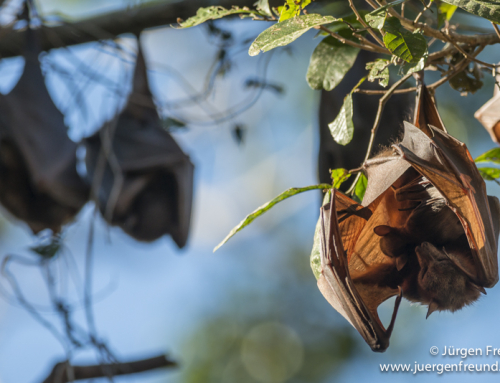23 July 2009
We arrived in Batu Rumah sometime 3 pm of July 23. Immediately our WWF leaders Mr. Bas and Franki called for a meeting with all the site monitoring staff and some local Papuan patrol volunteers.
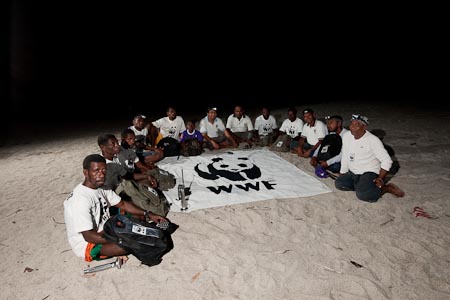
WWF Sorong staff photo in Warmamedi. They loved our flag!
Our presence and intentions were explained to everybody and our succeeding nights were planned. It was going to be a nighttime activity and sleeping would be done during the day. Leatherback turtles (Dermochelys coriacea) come out to dry land from the sea at night to dig their nests and lay their eggs on the beach. Although we had a proper room and bed in base camp, we prepared for camping in another area called Warmamedi, five kilometers away from base camp.
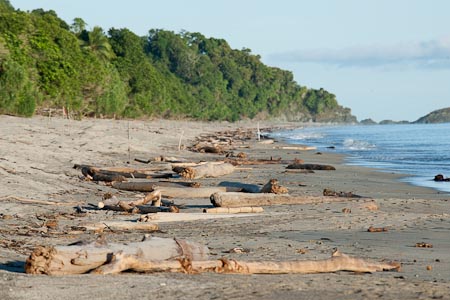
Warmamedi beach full of logs. But somehow the leatherback turtles like it here!
It was not going to be comfortable but Warmamedi was where the most number of leatherbacks have their nests, so that was where we wanted to be. Warmamedi had a communal tarpaulin tent right beside the WWF hatchery, where turtle eggs too close to the water line were dug out and relocated to. It was all here, and we couldn’t wait to get into it. The whole stretch of the Warmamedi beach was about two kilometers. It was going to be a lot of walking! This was going to be my first time to witness a turtle egg-laying, and a leatherback at that! I think I was the only virgin in the group.
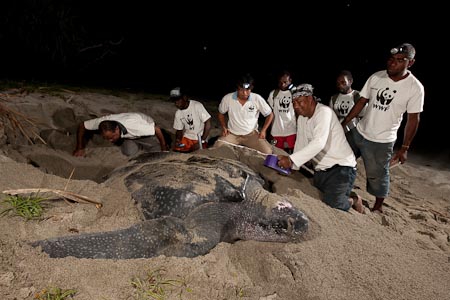
Bas Wurlianty with his team scans and collects pit tag data. Our first sighting of leatherback turtle laying her eggs
Mr. Bas saw the first leatherback turtle at midnight. She was HUGE! We all kept dead quiet until our leatherback mom finished digging her nest and started laying her first few eggs.

Magnificent ancient mariner makes a camouflage nest to fool predators on the real location of her eggs.
Once she is laying, she will be oblivious to anything else happening around her. Her only concern is to lay her eggs, cover it, and crawl five meters away to create a camouflage nest to fool predators before going back to sea.

Yogi non-stop clicking his camera the whole night away
From coming out of the sea, to crawling back to the sea, it will take each leatherback turtle two hours.

Local Papuan villagers now volunteer patrolers getting trained to do turtle research
A frenzy of activities happened once the turtle started laying. Her measurements were taken, a scanner located her pit tag data, her nest was marked with a stick, and details written down. If the turtle had no pit tag, one was injected into her shoulder. It was all very scientific.
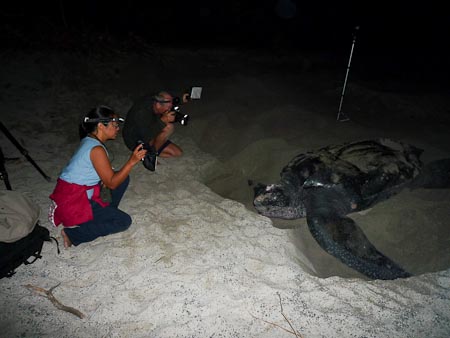
The Freund Factory photographing a hard working leatherback turtle making her nest
We too were working non-stop to photograph all the activities. Yogi was under extreme pressure. Three strobes were used to illuminate her, and one if not two of the strobes, would sometimes malfunction. It was tense and intense.
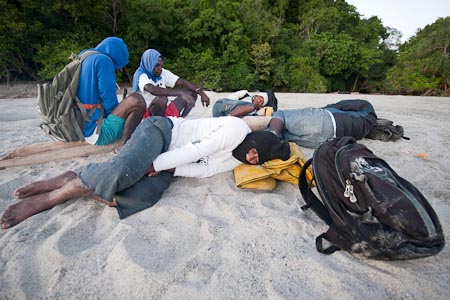
Mr. Bas sleeping soundly surrounded by his local patrollers
Mr. Bas had only one night with us and he had to go back to Sorong the next day, so it was a good thing he saw the first turtle! We were with everyone. The three WWF monitoring staff were Daro Tadu, Eka Kambu, and Sonar Mampioper. The three local Papuan volunteers came from the nearest village Saubeba, and were trained right on the spot. And of course we had Mr. Linder. That night we saw only one leatherback turtle laying, and once we figured we could rest a bit, we dozed off inside the tent on a mat with sarongs as our blankets. It was 3:30am when we walked back to camp and went to sleep.
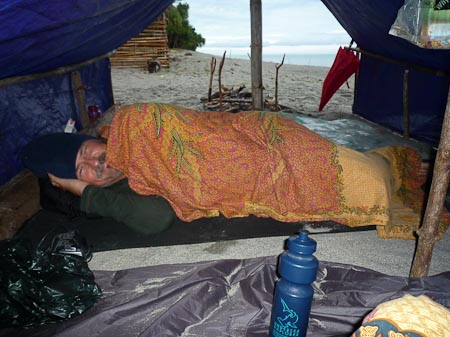
Goodmorning sunshine. Yogi still in bed after sunrise

